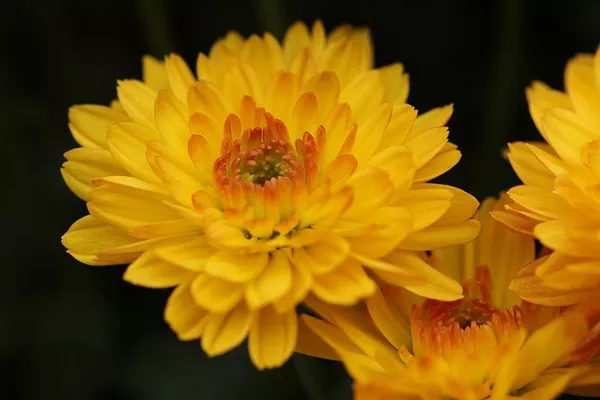Flowers have long held symbolic meanings across cultures and time periods, often embodying values, emotions, and concepts that transcend linguistic barriers. Among these floral symbols, the chrysanthemum stands out for its rich cultural significance and varied interpretations. This article delves deep into the symbolism of the chrysanthemum flower, examining its historical roots, cultural associations, and contemporary relevance.
Historical Origins and Cultural Significance
The chrysanthemum (Chrysanthemum spp.) has a venerable history that dates back thousands of years, primarily in East Asia where it originated. Its name is derived from the Greek words “chrysos” meaning gold, and “anthemon” meaning flower, reflecting its original golden-yellow coloration. Initially cultivated in China as a herb with medicinal properties, the chrysanthemum gradually assumed symbolic importance beyond its botanical uses.
In Chinese culture, the chrysanthemum holds a position of high regard. It is one of the “Four Gentlemen” or “Four Noble Ones,” a group of plants that also includes the orchid, bamboo, and plum blossom, each representing a season and embodying virtues such as resilience, purity, and integrity. The chrysanthemum specifically symbolizes autumn and the spirit of resilience in the face of adversity. During the Han dynasty (206 BCE – 220 CE), it became associated with Taoist philosophy, signifying longevity and immortality due to its ability to bloom late into the year.
Japanese Interpretations and Symbolism
In Japan, the chrysanthemum holds equal prominence. It was adopted as the imperial seal during the Nara period (710–794 CE) and remains a symbol of the Japanese emperor and the imperial family. Known as the “kiku,” it is celebrated annually during the Chrysanthemum Festival (Kiku no Sekku), held on the ninth day of the ninth month according to the lunar calendar. The flower’s association with longevity and rejuvenation aligns with Japanese beliefs about its ability to extend life and ward off illness.
Moreover, in Japanese art and literature, the chrysanthemum appears frequently as a motif symbolizing beauty, elegance, and the changing of the seasons. It is often depicted in ukiyo-e woodblock prints and haiku poetry, capturing its fleeting yet profound essence.
Symbolism Across Other Cultures
Beyond East Asia, the chrysanthemum has traveled and taken on new meanings in various cultures:
Western Symbolism: In Europe and the United States, the chrysanthemum is often associated with positivity and good cheer. It is a popular flower for bouquets and floral arrangements, particularly during autumn and festive seasons.
Australian Perspectives: Indigenous Australian cultures have also adopted the chrysanthemum as a symbol of beauty and vitality, integrating it into their own artistic traditions and floral lore.
Middle Eastern Interpretations: In parts of the Middle East, the chrysanthemum symbolizes death and mourning, perhaps due to its association with autumn and the withering of flowers.
Each cultural interpretation adds layers of meaning to the chrysanthemum’s symbolism, illustrating how a single flower can evoke diverse emotions and concepts across the globe.
SEE ALSO: The Chrysanthemum Plants: How Long Do They Live?
Symbolism in Art and Literature
The chrysanthemum’s symbolic richness extends into the realms of art, literature, and popular culture. Artists from Vincent van Gogh to Georgia O’Keeffe have immortalized its beauty on canvas, capturing its intricate petals and vibrant colors. In literature, from classical Japanese poetry to contemporary Western novels, the chrysanthemum appears as a metaphor for emotions ranging from love and longing to fragility and resilience.
One notable example is the short story “The Chrysanthemums” by John Steinbeck, where the flower symbolizes Elisa Allen’s suppressed desires and frustrations in a male-dominated society. The story’s exploration of gender roles and identity resonates with the chrysanthemum’s symbolic ambiguity, highlighting its ability to convey complex human experiences.
Modern Symbolism and Cultural Evolution
In the modern era, the chrysanthemum continues to evolve in symbolism, adapting to contemporary contexts and societal changes:
Floral Language: In the Victorian era, flowers were used to convey coded messages, and the chrysanthemum symbolized truth and fidelity, making it a popular choice for gifts and floral arrangements.
Gardening and Horticulture: Beyond symbolism, chrysanthemums are prized for their diverse colors and forms, making them a favorite among gardeners and horticulturalists worldwide. They are cultivated for their beauty and resilience, thriving in various climates and soil conditions.
Corporate and Branding: In business and marketing, the chrysanthemum’s positive connotations of longevity and vitality are sometimes leveraged in branding and corporate identity, particularly in industries such as health and wellness.
Conclusion
The chrysanthemum flower’s symbolism is as diverse and multifaceted as the cultures that have embraced it throughout history. From its origins in ancient China to its role as a national emblem in Japan, and its symbolic resonance in Western art and literature, the chrysanthemum continues to captivate and inspire. Its ability to convey themes of beauty, resilience, and cultural identity underscores its enduring relevance in an ever-changing world. As we continue to explore and appreciate the chrysanthemum’s symbolism, we gain a deeper understanding of the profound connections between nature, culture, and human expression.


